India’s Commitment to Climate Resilience: Progress Towards NDC Goals
India’s Commitment to Climate Resilience: Progress Towards NDC Goals
Published on :- September 1st, 2023
India's commitment to NDC (Nationally Determined Contributions) refers to its pledge to reduce greenhouse gas emissions and address climate change in accordance with the Paris Agreement. India submitted its first NDC in 2016 and further updated it in 2022, which included a number of qualitative and quantitative elements.
India's NDC includes the following key commitments:
In this edition of data dialogue, we explore and analyse some key indicators pertaining to India’s progress towards NDC commitments.
Mitigation
Despite a low per capita carbon emission (1.6 metric tons in 2020), India is the 3rd largest carbon emitter globally. In 2020, India’s total carbon emission was about 2.2 billion metric tons.
India’s total carbon emissions have increased by ~1600 thousand metric tons (increased by more than 260%) in the last three decades, 1990-2020. During the same period, its emission intensity was halved. In 1990, it was ~0.55 Kgs/PPP $ of GDP and declined to 0.24 Kgs/PPP $ of GDP in 2020.
Note: Emission Intensity is calculated by dividing 'Total greenhouse gas (GHG) emissions' by 'Total Gross Domestic Product (GDP)' of a country.
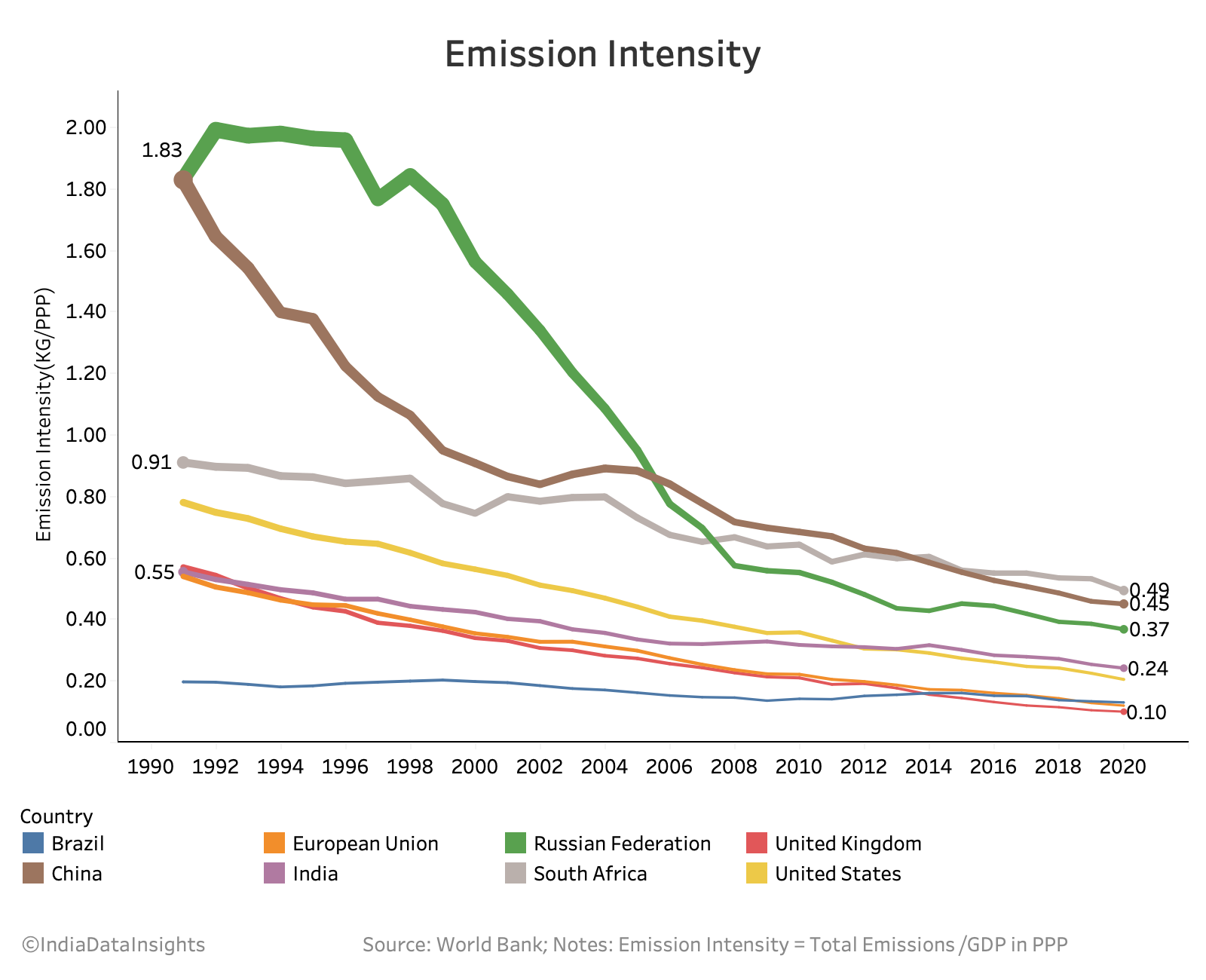
Coal is the major contributor to India's greenhouse gas emissions. In 2020, ~71% of India’s total carbon emissions were from Coal. Emissions from coal have increased fourfold since 1990 and doubled in the last 15 years.
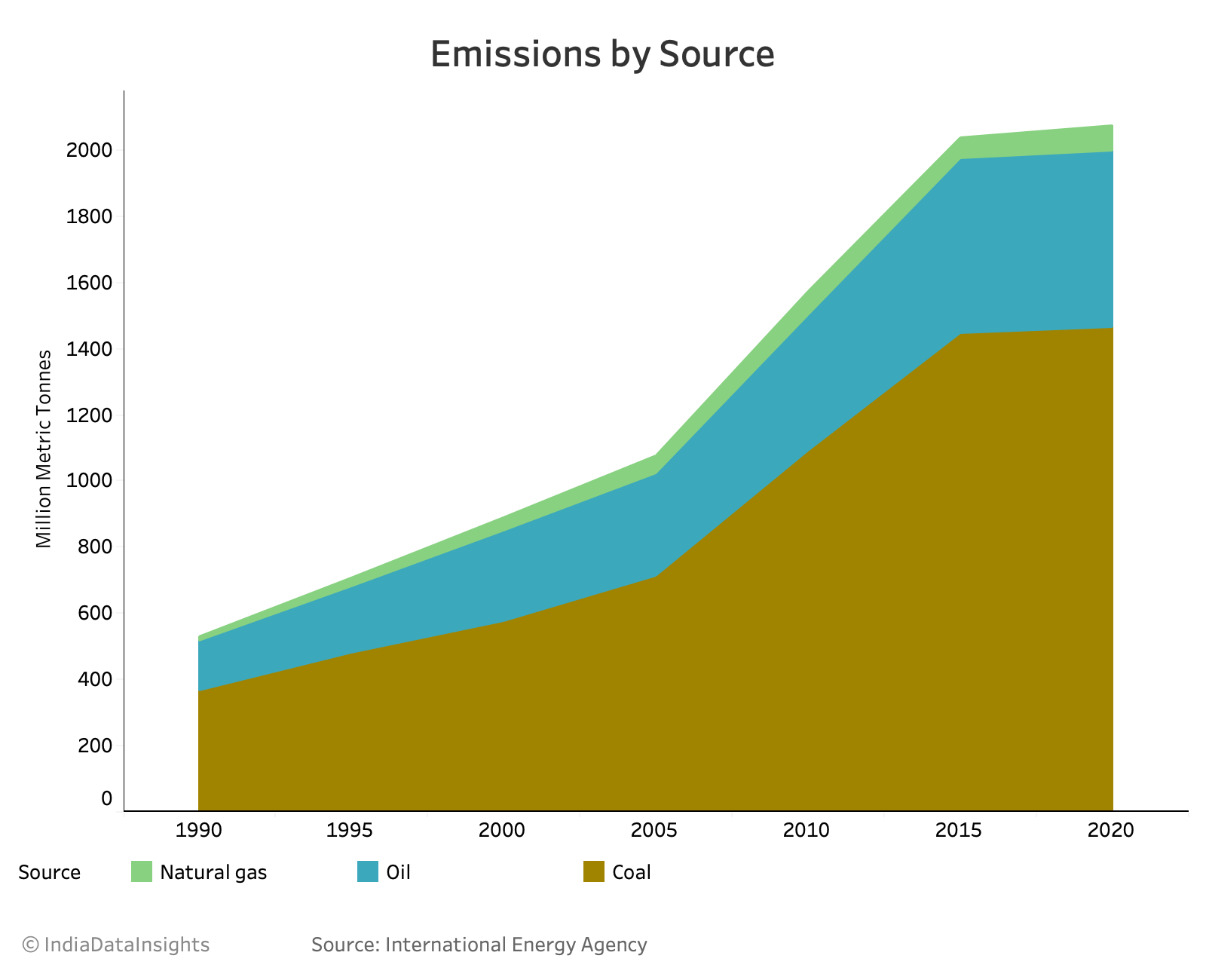
With the updated NDC, the Government of India has put in place new initiatives to promote manufacturing and adoption of renewable energy, such as electric vehicles (EVs), super-efficient appliances, innovative technologies, etc.
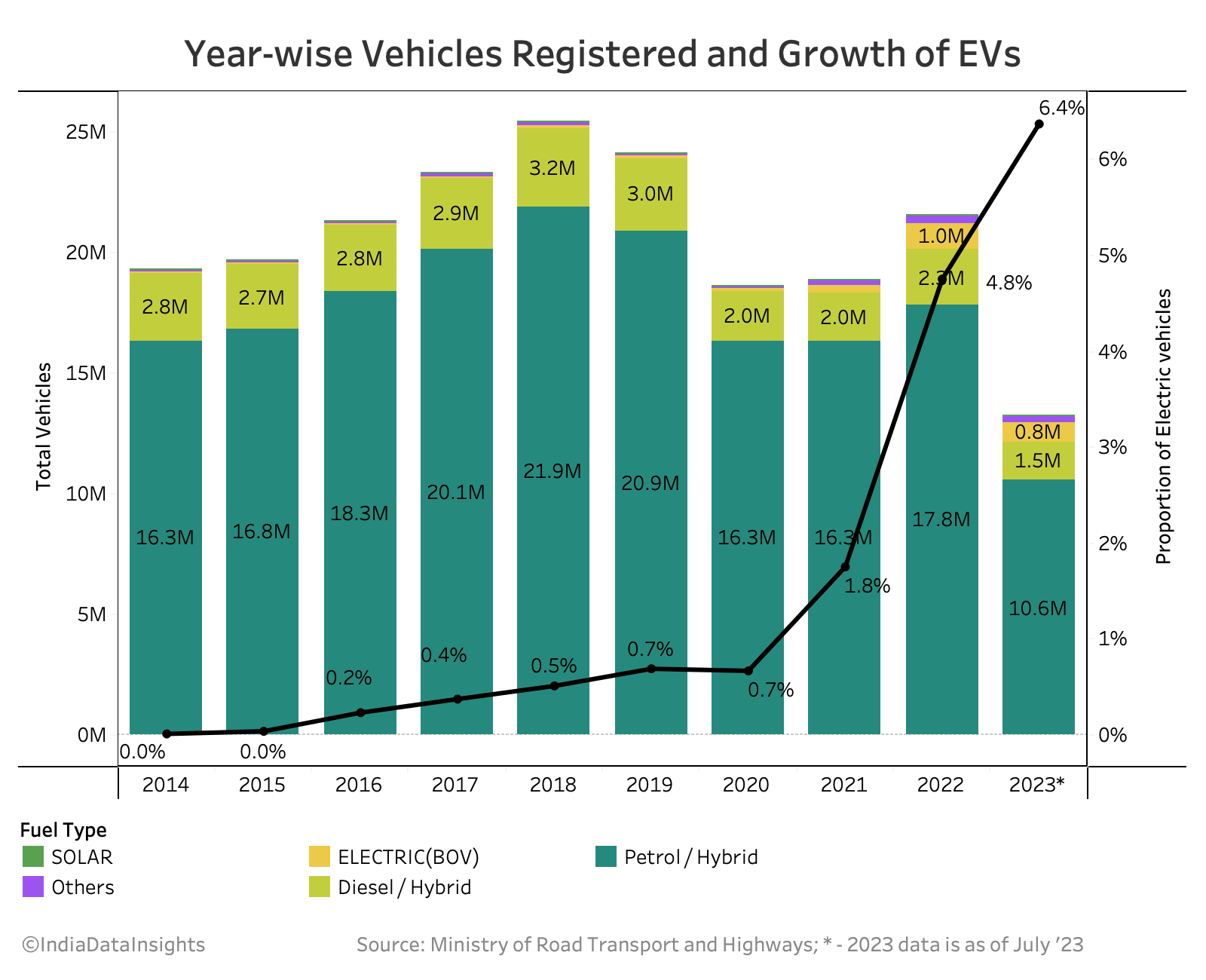
Approximately every year, 18-20 million vehicles are registered in India. EV number registration has surged from 2389 (2014) to 10.25 Lakh vehicles in 2022. In 2022, ~5% of registered vehicles in India were EVs.
Renewable EnergyOne of India’s commitments is to achieve about 50 percent cumulative electric power installed capacity from non-fossil fuel-based energy resources by 2030.
As of March 2023, India’s total installed capacity from renewable sources (hydro+renewable) was ~172 GigaWatts (41% of total installed capacity).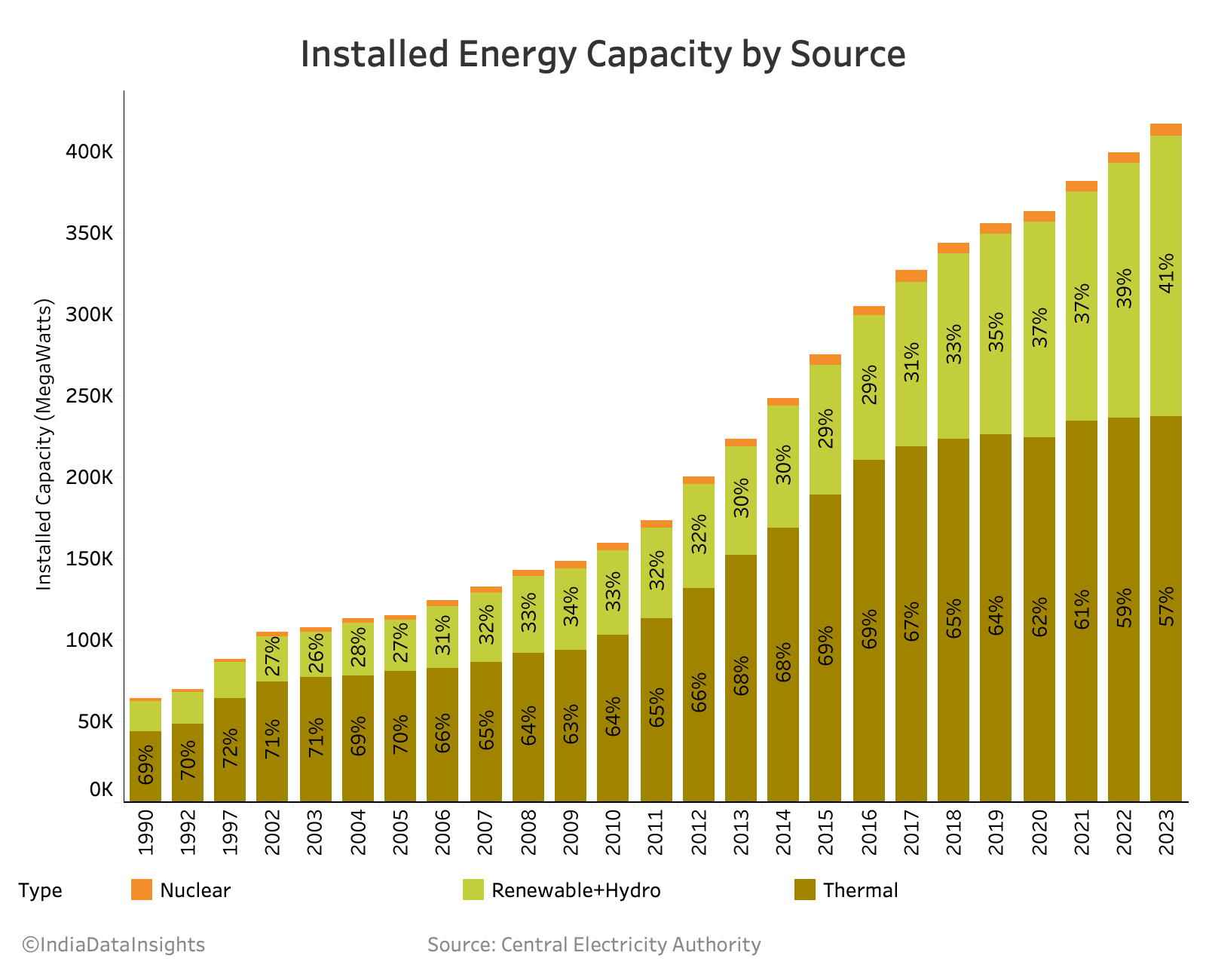
As of March 2022, ~22% (~156 GigaWatts) of India’s power was generated from renewable sources. Over the last three decades (1990-2023), the capacity for renewable energy (hydro + renewable energy) has increased 10-fold. During the same period, power generation from renewable sources has increased 5-fold.
Afforestation and Forest ConservationImproving the extent and quality of forest cover, as well as estimating the additional carbon sink created through afforestation and forest conservation efforts helps combat climate change.
As per the 2021 assessment of the Forest Survey of India, 21.71% (~712K square kilometres) of India’s geographical area is covered by forests. Only 14% of this is categorised as very dense forest.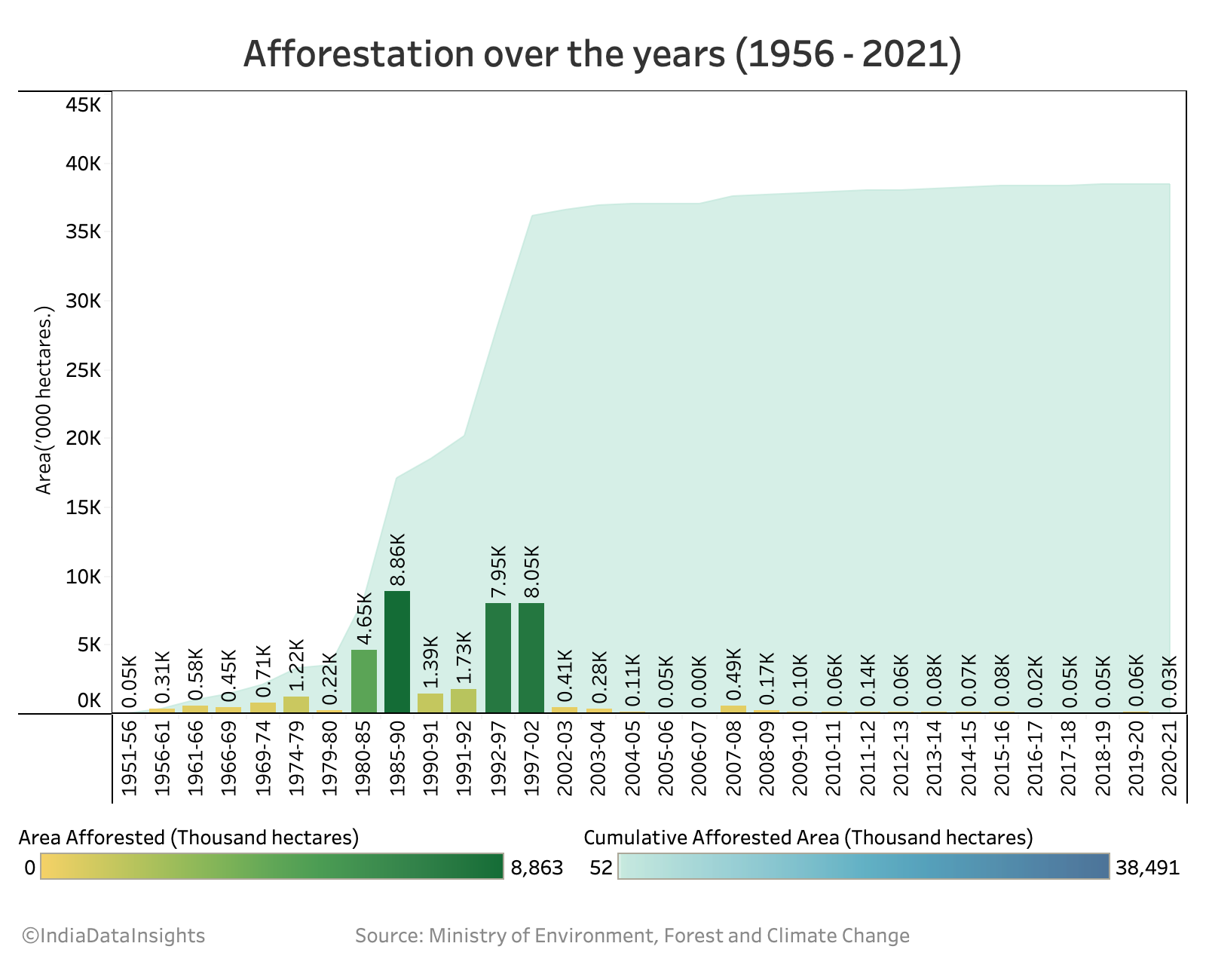
Maximum afforestation was seen during the period 1980 - 2002. About 30 thousand hectares of area was afforested – a fourfold increase in two decades. Afforestation has been minimal since the year 2000.
Adaptation
India aims to enhance its adaptation efforts to build resilience against climate change impacts by promoting sustainable and climate-resilient agriculture, water resource management, and climate-resilient infrastructure development.
As of 2021, ~35 Lakh hectares (~4%) of the area was under organic farming in India. Half of Sikkim’s and approximately 1/4th of Himachal Pradesh’s total gross sown area was under organic farming.
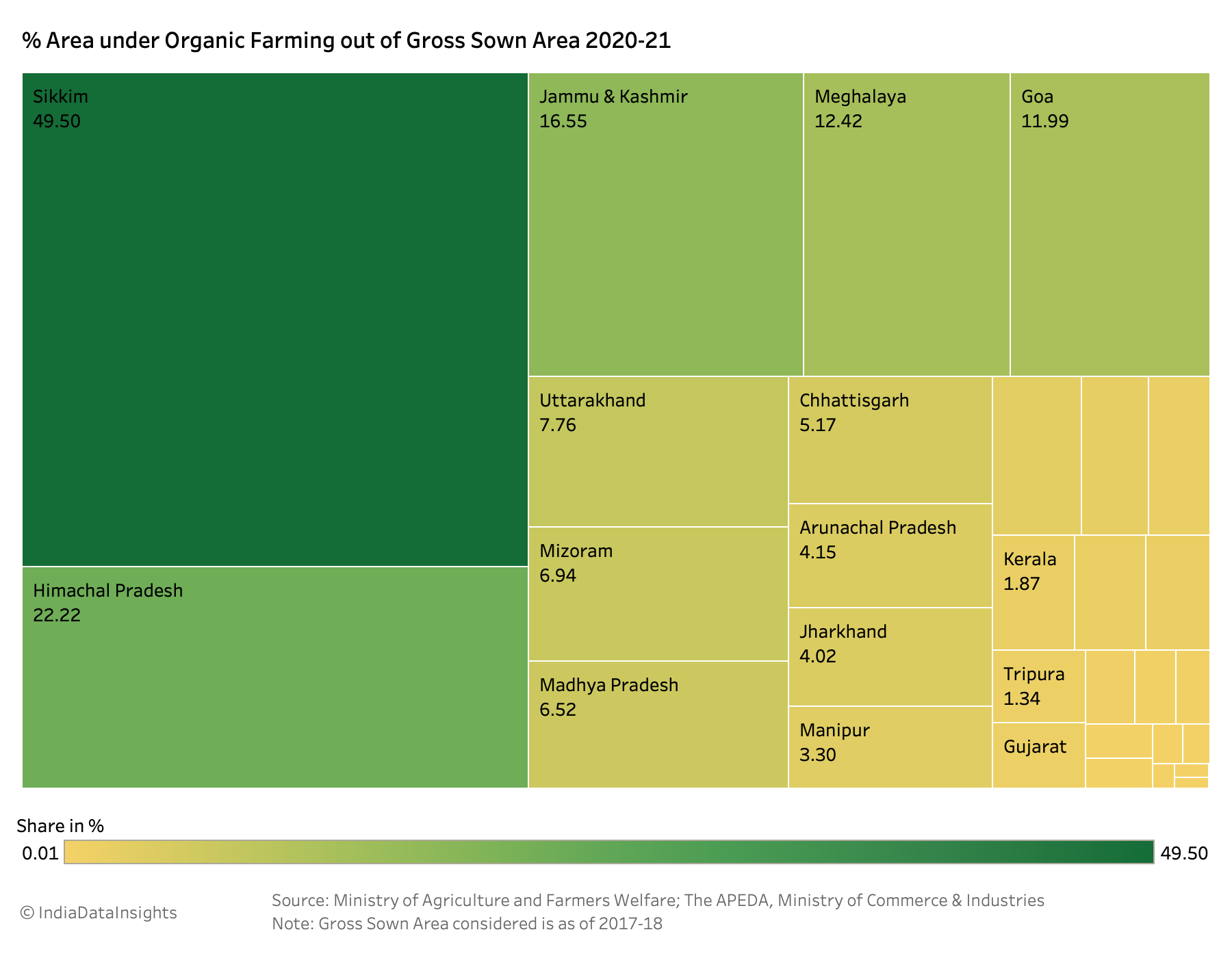
Better water management techniques such as micro irrigation and water-shed development are also being prompted and increasingly adopted.
The impact of climate can be seen across various entities such as rising temperatures, erratic rainfall, heat/cold waves, poor air quality, natural disasters, species going extinct and many more. Our SDG 13 datashots and The Climate Affect data blog, explore in detail the impact of climate change in India.
Recognising that lifestyle has a significant role in climate change, at the 26th session of the Conference of the Parties (COP26), India proposed a mass movement for ‘LIFE’– ‘Lifestyle for Environment’ as a key to combating climate change. The vision of LIFE is to live a lifestyle that is in tune with our planet and does not harm it.
The announcement of dedicated budgets for climate commitments, adopting green technology, low-cost international finance including from the Green Climate Fund and the propagation of a healthy and sustainable way of living based on conservation and moderation shows India is committed to achieving its NDC goals.
Explore our detailed report for more insights on India’s progress on NDC.
